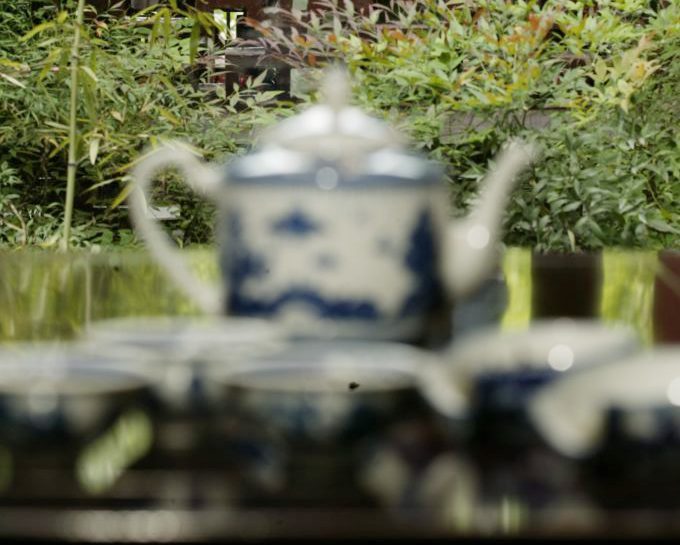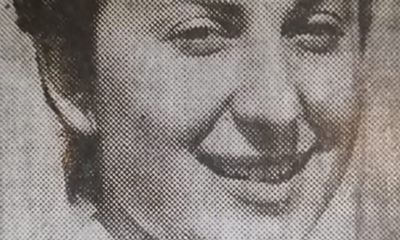
Featured Item

Rooibos tea’s Jewish roots run deep
Published
3 years agoon
By
Jordan MosheA staple in any self-respecting South African kitchen, rooibos tea hasn’t always had the widespread popularity it enjoys nowadays.
Once considered an inferior substitute for black tea, the “red bush” of the Cederberg was actually raised to prominence thanks to the efforts of an immigrant Jewish family, securing its place as a much sought-offer drink of choice.
“The Ginsberg family has always been about facing the world,” says tea mogul Bruce Ginsberg. “We’ve always been strong and proud of our identity, proud of who we are intrinsically but always feeling the need to go beyond ourselves. We believe in playing our part.” For the Ginsbergs, that part is tea.
Ginsberg is from the Western Cape, and is the founder of major British tea brand, Dragonfly Tea and its sister brand, Tick Tock Tea. Today a resident of Newbury, England, he has spent the past 40 years promoting the rooibos tea of his native South Africa across the world, following in the footsteps of his pioneering ancestors.
The family’s connection with rooibos began in the Cape, when Aaron Ginsberg (Bruce Ginsberg’s great-grandfather) arrived from Dvinsk, Russia, in the 1880s. He and his wife, Elke, came in search of business opportunities, soon establishing a respected trading post as a general dealer. His son, Benjamin (Barend), would follow in 1903, joining his father’s business before going on to marry in 1912 and moving into the district of Clanwilliam.
“My grandparents integrated automatically into the society of Clanwilliam,” Ginsberg says. “They were city people – not outsiders – but strong personalities who became part of the community. They were well-educated and enterprising, trading with farmers who lived in remote areas.”
Back in Russia, tea had occupied a central part of Benjamin’s life, having lived there with a maternal uncle who worked in the tea trade. It was therefore no surprise that he turned his attention to the tea industry in South Africa, discovering the plant about which few outside the rural areas had ever heard: Aspalathus linearis, more commonly called rooibos.
“My grandfather always had a samovar boiling,” says Ginsberg. “He had a passion for tea, and he applied it to the Cape. He was the first to put rooibos into packets, making a consistent quality tea, and he carried out experiments using old Chinese tea curing techniques on this wild plant.
“In the 1920s, a shortage of wild teas [which grew only in the Cederberg coastal ranges inland from the South Atlantic coast] led to Benjamin driving a project to get rooibos, which has a difficult seed to propagate, into cultivation.”
His undertaking was extensive. With Benjamin’s encouragement, farmers across the region began harvesting the plant on a major scale, delivering them to Ginsberg’s store on Victoria Street in Clanwilliam. Under his watch, the previously crude methods used to harvest and process the plant became streamlined, setting standards of uniformity and quality that quickly boosted the previously humble rooibos to new heights.
Anecdotes exist about Ginsberg’s early attempts to promote rooibos tea in Cape Town, says Russian writer and researcher, Boris Gorelick, who has studied closely the history of the Ginsberg family’s tea enterprise.
“They say, for instance, that he used to drop small packs of rooibos on pavements to be picked up by curious Capetonians,” he says. “His other [more conventional] approach was to put up stalls in Adderley Street and hand out free samples with instructions for making the tea.
“Although he was a trader not a producer, he had the knowledge and social skills to give momentum to the industry. Somebody, he realised, had to set quality standards for rooibos.”
Rooibos tea became a priority for Benjamin’s company, and he launched his own brand of the product, Eleven O’ Clock, still enjoyed in South Africa today. According to Gorelik’s research, Benjamin devised the product’s iconic watch face when he “pulled his watch from his waistcoat pocket, put it next to a piece of paper, and drew a dial with the hands at 11 sharp”.
“You will still find that image on the packs of Eleven O’ Clock, the oldest existing brand of rooibos in the world,” he says.
Benjamin’s son, Henry Charles, inherited the family enthusiasm for rooibos, taking over the brand in the 1940s with his father’s death, and laying out the first dedicated large-scale rooibos plantations on Die Berg, Moreson, and Stillerus farms. By the early 1950s, he was the biggest grower, buyer, and marketer of rooibos tea.
Says Ginsberg, “My father was a major figure in the North West and was obsessed with farming. He grew everything on his model farming estate, and was a real driver of the rooibos enterprise. By 1950, he was growing half of the rooibos tea cultivated in South Africa.”
Thanks to Henry Charles, the obscure plant from the Cape reached the major city of Johannesburg, and rooibos became available at every grocer across the country. Following in his father’s stead, Ginsberg advanced the cause of rooibos in his own way, promoting the tea in Britain in the 1970s.
“I came to England in 1976 to open the market here,” he recounts “Until then, rooibos had been sold as a cheap, ‘poor man’s tea’, much cheaper than the Ceylon people were drinking. I thought it was something hugely special – caffeine free and something few people really knew much about.
“My wife and I sat in London with packets of the stuff, the two of us pasting labels onto the packages late into the night. No one wanted what they thought was a horrible African drink, but we promoted it as something truly special, and more people started buying it.”
Ginsberg has promoted the once obscure drink across the world, championing his home country’s brew at upmarket stores and fairs across Europe and the United States, and has travelled far to perfect the art of proper tea making. He remains deeply attached to his South African roots (rocks from the Cederberg mountains adorn his desk at home), and he believes that Clanwilliam made him the man he is today.
“It’s a delight to me to think that all this started in Clanwilliam,” he says. “I feel privileged to have done my small part to continue my family’s legacy.
“I owe a huge debt to all the people who have been part of my journey. A tender part of my heart still belongs to the people of the Western Cape, and I have an emotional debt to people of every race who lives there today.
“No matter what, I’m a child of ‘Die Kaap’.”










